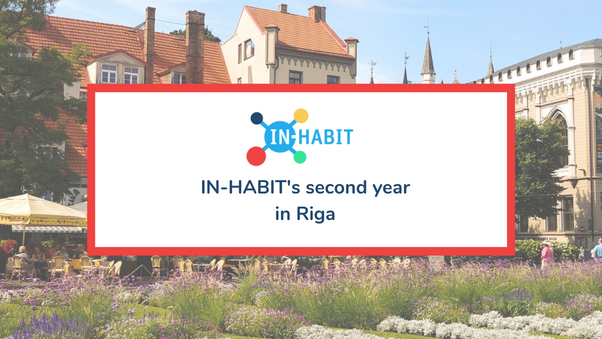
IN-HABIT attends NetworkNature event
November 2, 2022
Biodiversity and Human Well-Being – Europe’s Role in Shaping Our Future
November 2, 2022As IN-HABIT enters its third year, the Riga team looks back on its major activities and achievements so far.
The second year of IN-HABIT in Riga has been rich with community and research activities. Agenskalns food market was planned to be the central locus of the project’s activities in Riga, therefore the opening of the market in May 2022 was a central milestone, now providing a physical space for gatherings, events, and the deployment of the project’s activities. The IN-HABIT meeting in Riga in mid-May was also able to be held in the newly-opened market facilities. After the project’s many online meetings, the Riga team was happy to meet colleagues from TESSERAE, the University of Reading, and Book on the Tree face to face to discuss and coordinate the project’s activities in the city in the fields of gender equality and social inclusion, participatory processes, and communication.
Since its opening, the Agenskalns market has become a lively site in the neighbourhood. Not only has it returned a popular place for purchasing food to the population, it also offers a range of cultural, educational, and social activities for various groups organised by the market operator in cooperation with different organisations and institutions, such as the Latvia University of Life Sciences and Technologies and Latvia’s State Forests.
Before the opening of the market, the Riga IN-HABIT team launched a range of initiatives to receive feedback and input from Agenskalns neighbourhood residents and visitors regarding the planned activities. Two rounds of consultations were organised about the market’s outdoor space, solutions for waste management, and e-shop. The results confirmed diverse perceptions and expectations of different population groups vis-a-vis the market. While food purchasing was admitted to be the key function of the market, the responses also echoed the project’s ethos that the market should be an inclusive and attractive place for everyone, and its operators should pay particular attention to more vulnerable groups with specific needs.
The Riga team were also involved in the organisation of capacity building and mindset change activities, implemented in cooperation with the project partner Design for Change Spain. Two participatory workshops were organised for teachers and educators in Riga with the aim of building skills that can empower them to encourage, motivate, and support children and youth to pursue their ideas and implement their projects.




